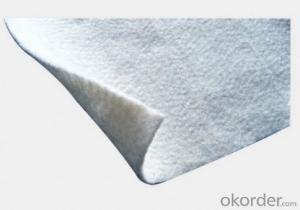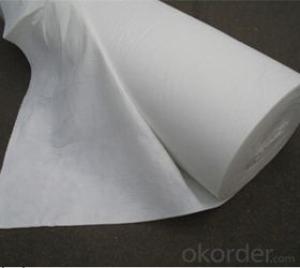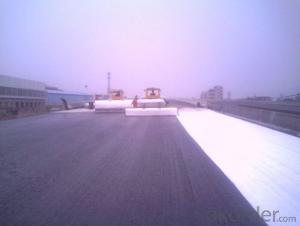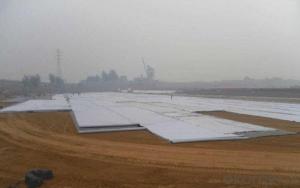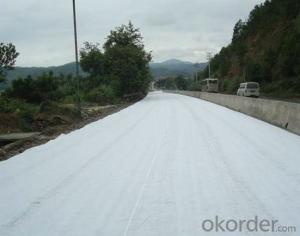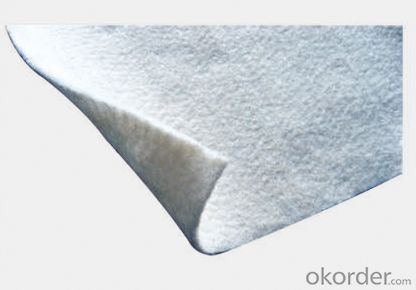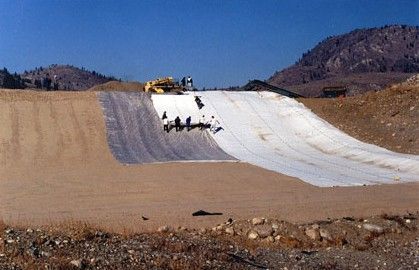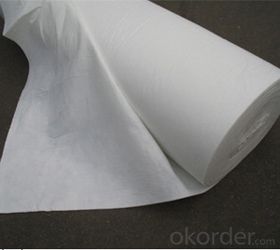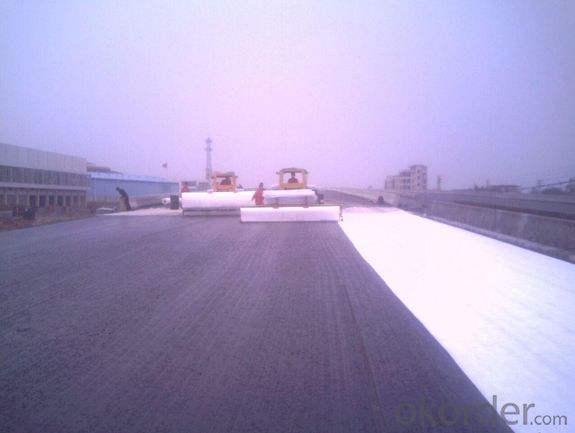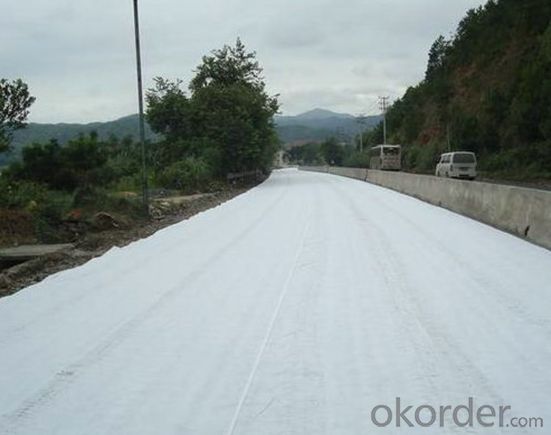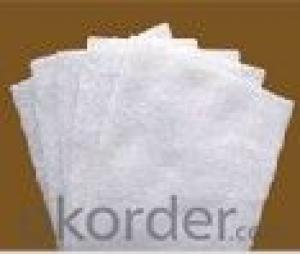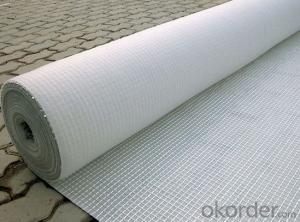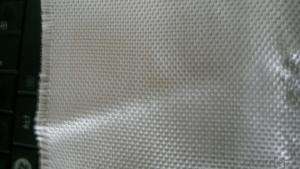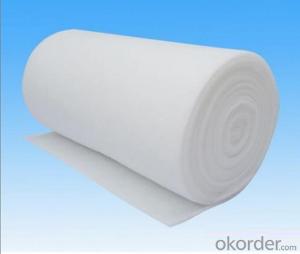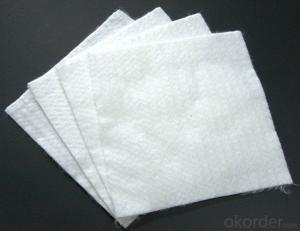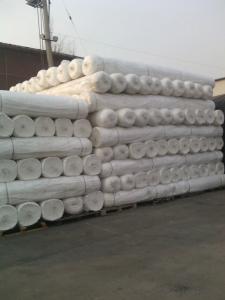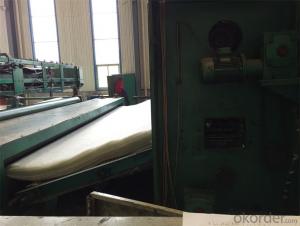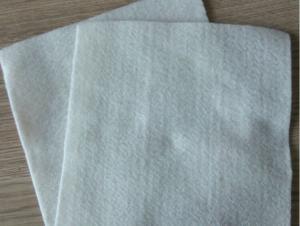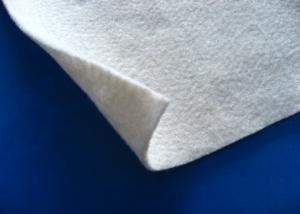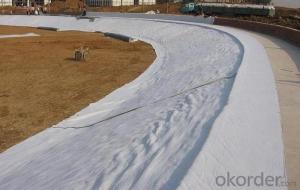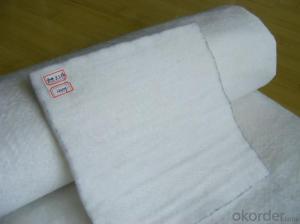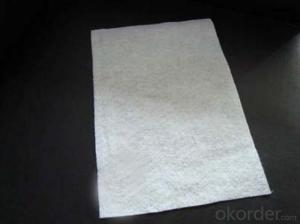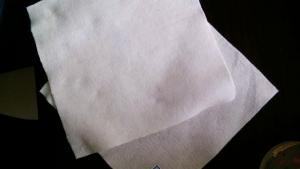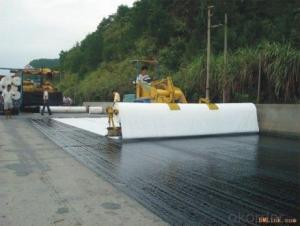Geotextile Sand Filter - Pet Continuous Filament Spunbond Needle Punched Nonwoven Geotextile
- Loading Port:
- Qingdao
- Payment Terms:
- TT OR LC
- Min Order Qty:
- 20000 m²
- Supply Capability:
- 1500000 m²/month
OKorder Service Pledge
OKorder Financial Service
You Might Also Like
Specifications of PET Continuous Filament Spunbond Needle Punched Nonwoven Geotextile
1) Weight / Mass: 100g/m2-1500g/m2
2) Width: Within 8 m (1m-8m)
3) Length: 50m-100m/roll (as request)
4) Material: PP / PET
5) Color: Black , white , grey and other color
6) Certificate: CE/ISO9001 , ISO14001
7) Manufacturing method: nonwoven / woven
8) The Biggest geotextile manufacturer/factory in China for many years
FAQ:
What is the main application of PET Continuous Filament Spunbond Needle Punched Nonwoven Geotextile ?
The main application of our PET Continuous Filament Spunbond Needle Punched Nonwoven Geotextile is as follows: The highway, railway, soil-stone dam, breakwater, airport, backfill soil of retaining wall, slope protection, etc.
Where is your main market?
Our main market is in Middle East, South America and some African countries.
What is your advantages for PET Continuous Filament Spunbond Needle Punched Nonwoven Geotextile ?
One of the largest manufacturer of PET Continuous Filament Spunbond Needle Punched Nonwoven Geotextile for Construction with advanced equipment, big production capacity and excellent quality.
- Q: Who can talk about geogrid, fiberglass and geotextile What is the difference, from the material function, use all aspects of speaking, if the answer is good, I will add more points
- Grille is made of polypropylene, polyvinyl chloride and other polymer polymer by thermoplastic or molded two-dimensional grid or with a certain height of the three-dimensional grid grid, when used as a civil engineering, known as geotechnical Grille Engineering applications: roads, railways, abutments, approach roads, docks, dams, slag and other soft soil foundation reinforcement, retaining walls and road surface cracking engineering and other fields. Fiberglass mesh used in the external walls, wall paint, the main material to prevent the junction of different mortar and other plastering material cracking, hollowing. Local node reinforcement will also be used. Geotextile has excellent filtration, drainage, isolation, reinforcement, anti-seepage, protection, with light weight, high tensile strength, good permeability, high temperature, anti-freeze, anti-aging, corrosion resistance. Common non-woven fabrics, water layer inside the use, polyethylene polypropylene waterproof also used.
- Q: How do geotextiles help in preventing soil erosion on slopes?
- Geotextiles help in preventing soil erosion on slopes by acting as a protective barrier. They are engineered fabrics that are placed on the slope surface to stabilize the soil and control water flow. Geotextiles allow water to percolate through while retaining the soil particles, thus reducing the impact of rainfall on the slope and preventing erosion. Additionally, they help in reinforcing the soil structure, providing stability to the slope and preventing the loss of soil due to gravitational forces or surface runoff.
- Q: How are geotextiles affected by moisture content?
- Geotextiles are affected by moisture content in several ways. Firstly, the moisture content can impact the strength and durability of the geotextile material. Excessive moisture can weaken the fabric and reduce its tensile strength, making it less effective in supporting loads or resisting erosion. Additionally, moisture can promote the growth of bacteria and fungi, leading to the deterioration and degradation of the geotextile over time. Furthermore, moisture content can affect the filtration properties of geotextiles, as it can influence the flow of water through the fabric and its ability to retain particles. Therefore, monitoring and controlling moisture levels is crucial to ensure the optimal performance and longevity of geotextiles in various applications.
- Q: Geotextile, 150g how much money per square meter
- 1.2 to 1.5. See quality requirements. Huazhi geotextile material manufacturers
- Q: Can geotextiles be used in mining and landfill closure applications?
- Yes, geotextiles can be used in mining and landfill closure applications. Geotextiles are often used in these applications to provide soil stabilization, erosion control, and drainage solutions. They can help in preventing soil erosion, promoting vegetation growth, and improving overall environmental sustainability in these areas.
- Q: Garage top back to the soil before the drainage board geotextile take what role
- The top surface of the drainage board glue a layer of geotextile filter to prevent the passage of soil particles, so as to avoid drainage channel obstruction of the drainage channel, said white is to do a filter layer, the water discharged to the designated location, the traditional process is Block ah, stone ah, what do the water layer, and now with the drainage board is not the reason for the stone is the drainage board is plastic, light weight, can reduce the load of the building. Manufacturers of drainage board geotextile waterproof board
- Q: Are geotextiles suitable for use in seismic zones?
- Yes, geotextiles are suitable for use in seismic zones. Geotextiles are engineered materials designed to provide reinforcement, filtration, and separation functions in various civil engineering applications, including seismic zones. They can help improve ground stability, prevent soil erosion, and enhance drainage, which are crucial factors in earthquake-prone areas. Additionally, geotextiles have been successfully used in earthquake-resistant structures to mitigate the effects of ground shaking and soil liquefaction. Therefore, geotextiles are a viable and effective solution for construction and infrastructure development in seismic zones.
- Q: Can geotextiles be used in geosynthetic clay liner applications for containment systems?
- Yes, geotextiles can be used in geosynthetic clay liner applications for containment systems.
- Q: Can geotextiles be used in geogrid reinforced retaining walls?
- Yes, geotextiles can be used in geogrid reinforced retaining walls. Geotextiles are often used as a separation and filtration layer between the soil and the geogrids in these walls. They help prevent soil erosion, improve drainage, and provide additional support to the geogrids, enhancing the overall stability and performance of the retaining wall.
Send your message to us
Geotextile Sand Filter - Pet Continuous Filament Spunbond Needle Punched Nonwoven Geotextile
- Loading Port:
- Qingdao
- Payment Terms:
- TT OR LC
- Min Order Qty:
- 20000 m²
- Supply Capability:
- 1500000 m²/month
OKorder Service Pledge
OKorder Financial Service
Similar products
Hot products
Hot Searches
Related keywords
